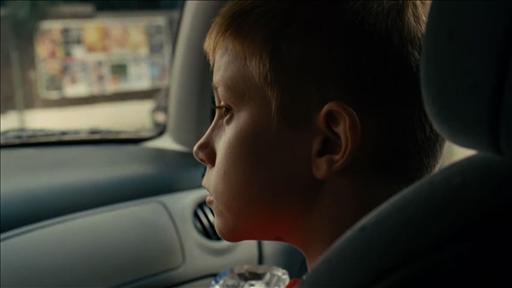
The Kid With a Bike in Review
If you’re used to film fluff-lights, fast cuts, CGI, stunts, movie scores—I dare you to sit through the raw sounds of a boy and his bicycle speeding alone down an empty street. No close-ups, no extra lights, no complex camera moves, just the character with his thoughts, and within the sounds of turning wheels you fill in the saddened blanks of an orphan’s life. The audience at the Santa Fe University of Art and Design’s Cinematheque, the Screen, can attribute this altruistic film to Jean-Pierre and Luc Dardenne’s production of Le Gamin au Velo, or The Kid With a Bike. Inspired by neorealism, arts dedicated to authenticity, The Kid With a Bike explores an earnest struggle between an orphan and his foster candidate while they attempt to build a family despite fear of abandonment.
Samantha (Cécile de France), the foster candidate, and the orphan, Cyril (Thomas Doret), give an excellent performance of realism, contributing to the director’s idea of fiction as modern commentary. Playing now in its sixth week, Jean-Pierre and Luc Dardenne’s film is perhaps a film for public’s sake and if we can experience it as such, then we can experience the true identity of society in it’s most stripped and candid form.
 Throughout the film, the emotionally-driven Cyril rides his bike further and further away from Samantha’s parental pursuits and closer to his father’s unwelcoming back door. However, the faithful Samantha waits patiently and sometimes grievously for Cyril’s return. The often-dynamic camera follows closely beside Cyril’s “flights” while returning to steady frame for those heart-throbbing moments of Samantha’s embrace. The characters literally perform, it seems, without the added concern of staging, the effect is like walking on the character’s heels without them noticing your shadow. This little to no disruption of the edit allows for a different sort of relationship between the audience and the characters. Every scene lasts in its sympathetic entirety and the long shot all but contributes to building tension of each new conflict. There are no cut-aways from Samantha’s lonely sobs, for example, or from Cyril’s apologetic stare.
Throughout the film, the emotionally-driven Cyril rides his bike further and further away from Samantha’s parental pursuits and closer to his father’s unwelcoming back door. However, the faithful Samantha waits patiently and sometimes grievously for Cyril’s return. The often-dynamic camera follows closely beside Cyril’s “flights” while returning to steady frame for those heart-throbbing moments of Samantha’s embrace. The characters literally perform, it seems, without the added concern of staging, the effect is like walking on the character’s heels without them noticing your shadow. This little to no disruption of the edit allows for a different sort of relationship between the audience and the characters. Every scene lasts in its sympathetic entirety and the long shot all but contributes to building tension of each new conflict. There are no cut-aways from Samantha’s lonely sobs, for example, or from Cyril’s apologetic stare.
Forgetting from moment to moment that the film is entirely in French, the script does much work to bring about believability. Most reactions are short but strong, such as Cyril’s comment of Samantha’s breath on his shoulder, “It’s warm.” Again, not romanticized, but real-life uncertainty, and indeed when nothing needs to be said the actors execute a full range of body subtext. Ideally, you could watch the movie with no sound and still feel like you’ve spent your money’s worth. Also in the film’s dedication to minimal enhancement, the setting plays a subtle role of authenticity. From the hairdresser’s shop to the drug dealer’s ghetto, the city creates a threatening stage for an orphan. Instead of hours of set preparation, however, the camera executes the real streets of France and lets the characters interact with them as they are.
The last time I felt so unsure of a story line was while watching a documentary and unless you are given the plot points of The Kid With a Bike, the tension of those unpredictable scenes, where Cyril hovers over happiness, will be nerve-racking. Only at the end does the audience feel the true change in Cyril and know that each early effort of Samantha was indeed a great act of patience and loyalty. Likely, no other film this year will touch you in such a believable and gorgeous way.
